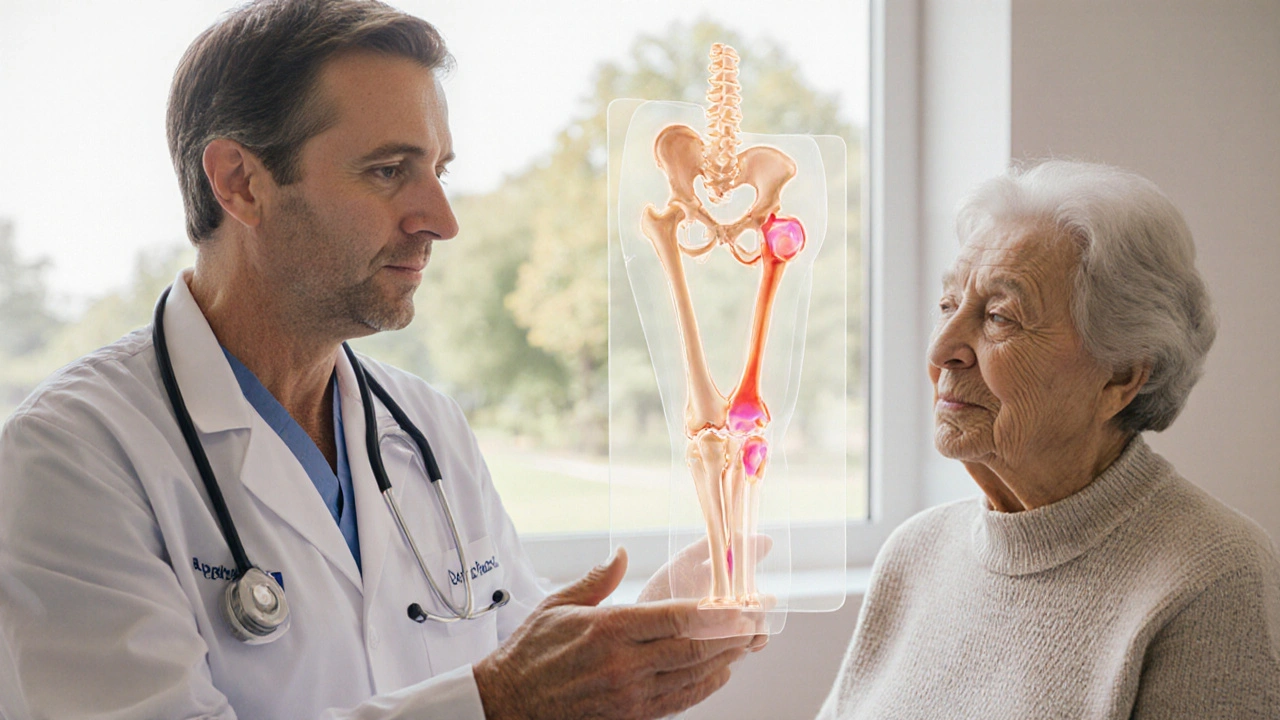Learn how osteoporosis affects bone graft success, the types of grafts available, and practical steps to improve healing, from nutrition to post‑op care.
MoreBone Graft Types: What They Are and When to Use Them
When talking about Bone Graft Types, the various materials surgeons use to fill or replace missing bone. Also known as bone graft varieties, they are essential for healing fractures, supporting dental implants, and aiding spinal fusion. Understanding the differences helps you or a loved one make informed choices during surgery.
One of the most common categories is the autograft, bone taken from the patient’s own body, typically the hip or rib. Because the tissue is native, autografts carry a low risk of rejection and provide natural growth factors that speed healing. Another key group is allograft, donor bone harvested from a cadaver and processed for safety. Allografts eliminate the need for a second surgical site, but they rely on sterilization methods to reduce disease transmission. Bone graft types also include synthetic grafts, manufactured biomaterials such as calcium phosphates or bio‑ceramics that mimic natural bone structure without any biological tissue. Finally, xenografts, bone sourced from other species, usually bovine offer another alternative when autograft or allograft isn’t feasible.
How These Grafts Fit Into Real‑World Procedures
Orthopedic surgeons often match the graft choice to the defect’s size and location. Large segmental defects in long bones frequently demand structural grafts—autografts for their strength, or synthetic blocks for load‑bearing support. Dental specialists, on the other hand, gravitate toward particulate grafts—often allograft or xenograft particles—to fill alveolar sockets before implant placement. Spinal fusion surgeons may combine a small autograft chip with a synthetic carrier to create a scaffold that encourages new bone growth while maintaining stability.
The healing process itself ties the entities together. Bone grafts provide three core benefits: osteoconduction (a scaffold for new bone), osteoinduction (growth factors that recruit bone‑forming cells), and osteogenesis (living cells that directly produce bone). Autografts excel in all three, allografts deliver strong osteoconductive and osteoinductive properties, synthetic grafts primarily offer osteoconduction, and xenografts add a mix of osteoconductive and limited osteoinductive effects. Knowing which property matters most for a given surgery helps you understand why a surgeon might recommend one type over another.
Patient factors also shape the decision. Age, health status, and medication use influence graft success. Someone on long‑term steroids may need a graft with added growth factors, while a healthy young adult might do well with a simple autograft. Insurance coverage, donor availability, and personal comfort with donor tissue are practical considerations that often appear in the pre‑op discussion.
Below you’ll find a curated list of articles that dig into each graft category, compare outcomes, and share tips for talking with your surgeon. Whether you’re preparing for a dental implant, a fracture repair, or a spinal procedure, the posts will give you actionable insight to navigate the options with confidence.

